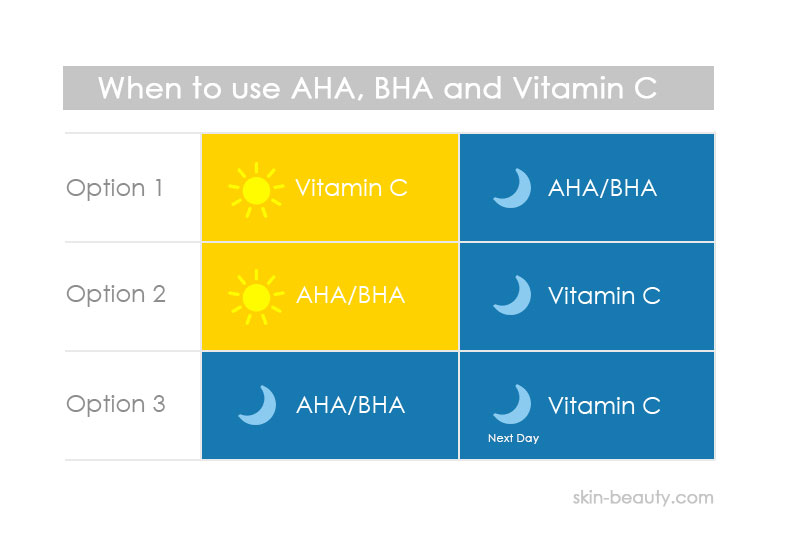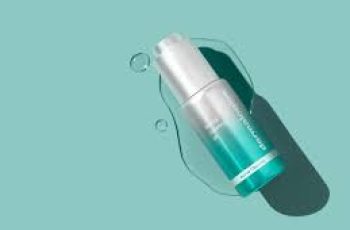
Can Vitamin C be mixed with AHAs and BHAs?
In the vast world of skin care, there is often a lot of confusion about chemical acids and their effects in a skin care routine. It seems that some of us are still a little hesitant about using AHAs and BHAs, so the idea of using Vitamin C with them can seem overwhelming, which is understandable. Well, don’t panic now, because we are here to demystify everything, and if we are lucky, by the end of today’s blog post, we will have answered the question: “Can you mix Vitamin C with AHAs and BHAs?”
However, before we dive in, let’s quickly review what these ingredients are and how they can benefit the skin.
What is Vitamin C?
Vitamin C is a versatile skin ingredient that has been used in the beauty industry for many years. It was only recently that this powerful powerhouse finally broke free of the misconceptions that had plagued him for many years. This is because it was considered unstable, which meant that it could cause various skin irritations and prevent product formulas from working effectively on the skin. With some well-established, stable versions of the ingredient, Vitamin C has gained a large following, including dermatologists, skin care experts, and fans. Here are some examples of the benefits you can expect from using Vitamin C. If you want to learn more about this clever ingredient, read our detailed blog post.
Vitamin C is rich in antioxidants, which means it fights free radical exposures such as pollution, UV rays and central heating. All of these are known to cause damage to the surface of the skin.
Vitamin C can increase collagen production, ensuring that the skin remains plump, vibrant and youthfully elastic. This is because Vitamin C contains two important enzymes that the skin needs to produce collagen, namely prolyl hydroxylase and lysyl hydroxylase.
Vitamin C fights hyperpigmentation, dark spots and pigmentation on the surface of the skin. It reduces the production of melanin, which appears on the surface and makes dark spots more pigmented. Over time, you will notice a visible difference and improvement in your skin tone.
Vitamin C has a variety of skin-lightening benefits and can restore skin radiance, but if you use it consistently, you will notice a huge difference in the look and feel of your complexion.
What are AHAs?
AHAs, also known as alpha hydroxy acids, are a type of chemical exfoliant that has become a favorite among beauty lovers. Depending on their structure, you’ll find them either naturally occurring or synthetically blended into a range of skincare products.
The difference between AHAs and physical exfoliants is that they break the bonds of dead skin cells to the surface of the skin. This allows the acids to remove the built-up dead skin cells without having to physically scrub them off your face. By clearing away unnecessary skin cells, bacteria, dirt, debris and other impurities from the skin, fresh, vibrant new skin is revealed that is healthy, happy and radiant. Read our dedicated post on Skin School to learn more about the benefits of AHAs for skin care.
What are BHAs?
BHAs, also known as beta hydroxy acids, are considered a close cousin of AHAs. They are generally considered more effective, but people with dry, sensitive skin shouldn’t use them because they can be too harsh on the skin.
The main difference between AHAs and BHAs is that BHAs, especially the most commonly used salicylic acid, are oil-soluble and have a smaller molecule size, which means they can penetrate deeper into the skin and reach the lower layers of the skin.
If you want to learn more about how BHAs work on the skin, check out our post on Skin School.
Can Vitamin C be mixed with AHAs and BHAs?
The short answer is: yes, but only if you’re sure your skin is happy with it. What I mean by that is that you need to first make sure you know your skin type before you try to layer these ingredients. People with oily skin may find it strong enough to use a careful blend of these acids and Vitamin C. However, before you go out and apply these products to your skin, you should make sure you’re still using these formulas effectively.
The easiest way to mix Vitamin C with AHAs and BHAs is to remember the basic skin rule, apply products from thinnest to thickest formulas. This allows each product to deliver its best results without having to compete with the physical barriers created by thicker formulas. Vitamin C is often found in serums and facial oils, so before applying a serum, you can opt for an exfoliating toner rich in AHAs (like glycolic acid) or BHAs (like salicylic acid). Combine this with a moisturizer or another serum rich in hyaluronic acid to give your skin a rejuvenating, hydrating boost that allows your skin to lock in moisture while counteracting possible dryness.
If you notice any signs of redness, increased sensitivity, or skin irritation, it’s best to stop using all three powerhouses in your routine and instead alternate the acids. You can do this by using the acids on different days or at different times of the day, using a vitamin C serum in the morning and your acid of choice at night.
Can BHA and Vitamin C be used together?
Yes, you can, but only if you use each ingredient correctly in your routine. As I mentioned, using BHA and Vitamin C together can be effective, but it can also be very drying to the skin. For best results, you must allow enough time between applications to allow the pH of the skin to balance and avoid unnecessary irritation.
For best results, use an exfoliating toner with a BHA (most likely salicylic acid) after cleansing. Wait about 30 minutes, then follow up with a serum rich in vitamin C, and finish with a moisturizer with hyaluronic acid and other hydrating ingredients.
If you find your skin is still showing signs of irritation, you can also deep cleanse your skin with a BHA product at night after a day of protecting your skin from free radical damage with a vitamin C serum.
Can AHAs and BHAs be mixed with hyaluronic acid?
Of course, the beauty of hyaluronic acid as a skincare ingredient is that it works seamlessly with a variety of other ingredients, even powerful ones like salicylic acid and glycolic acid. When layering these powerful ingredients, it is generally considered best to apply hyaluronic acid over a peel, as this will ensure that any potential dryness is prevented. Instead, the skin benefits from moisture being locked into the face and the protective skin barrier working with the right amount of water. This keeps the skin healthy and protected from free radicals and other environmental influences.
Can glycolic acid and vitamin C be used together?
Yes, you can use glycolic acid and vitamin C together, but you should know what you are doing! Glycolic acid and vitamin C are an effective combination if you have issues with dull, lackluster skin, are noticing signs of hyperpigmentation and dark spots, or are experiencing signs of aging.
You can achieve amazing skin results if you use these ingredients in a staggered manner, as this will help rebalance the pH of your skin and prevent irritation. We have detailed how to use glycolic acid and vitamin C together in a dedicated blog post here at Beauty Insiders.
How do salicylic acid and vitamin C work together?
The difference between salicylic acid and glycolic acid is that salicylic acid has a significantly smaller molecule size. This allows it to penetrate to the bottom of the pores to remove dirt, bacteria, excess sebum and other impurities. You will often find that salicylic acid is very effective, but it often causes skin irritation. Glycolic acid is also very effective, but due to its larger molecule, it mainly works on the outer layer of the skin.
How to use salicylic acid and vitamin C together depends on your skin type and the daily habits you have already established. This is because, as I mentioned before, enough time must pass between the use of these ingredients, otherwise you should choose to alternate the time to achieve the effect without causing unnecessary irritation to the skin.
Here you can learn more about how to mix vitamin C with AHA and BHA. Don’t forget to follow us on Instagram for more daily skincare tips, product launches and discounts.


